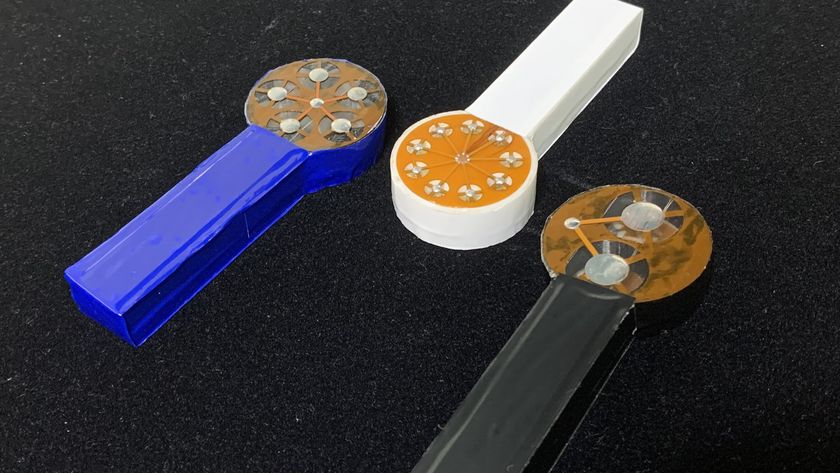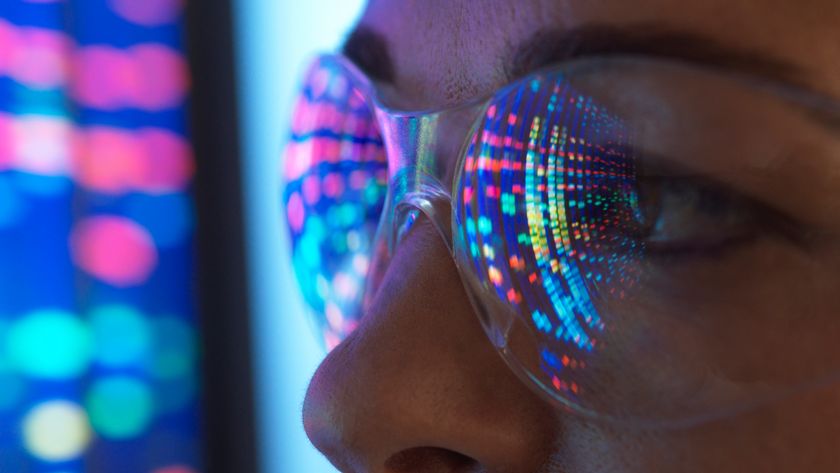Beyond Gaming: 10 Other Fascinating Uses for Virtual-Reality Tech
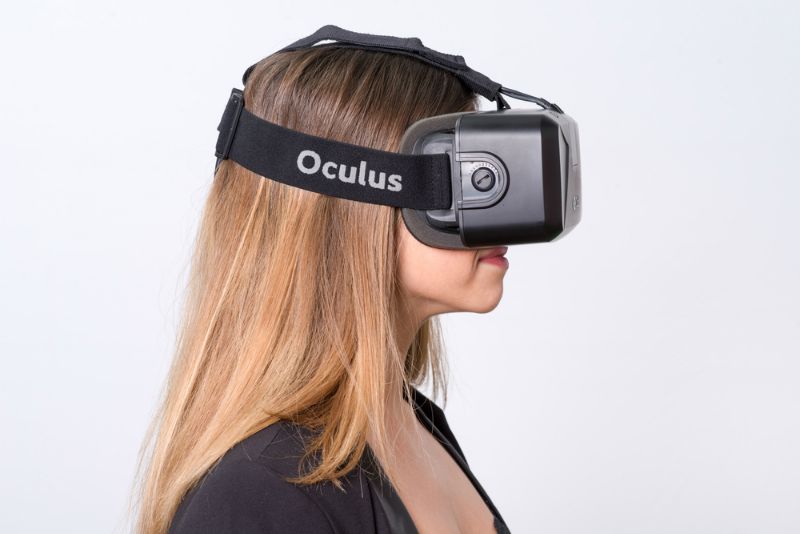
Gamers and gadget hounds can now get their hands on the hotly anticipated Oculus Rift virtual-reality headset: The Facebook-owned company announced the commercial release of its virtual-reality device last week at CES in Las Vegas.
At a whopping $600, the Oculus Rift may seem expensive for a gaming device, but the technology has come a long way since the company first launched its Kickstarter campaign in 2012. Virtual-reality (VR) headsets are now being used in many industries as a way of training people or providing a new way to experience things.
Here are 10 ways virtual-reality technology is being used beyond gaming. [Photos: Virtual Reality Puts Adults in a Child's World]
Entertainment
If gaming weren’t already one of the primary uses for virtual-reality technology, then other forms of entertainment certainly would be. Theater audiences can already enjoy 3D movies, but with apps like Oculus Cinema, users can be even more deeply immersed in their movie experiences. They can watch movies on a huge virtual screen, something like their own personal theater, or even watch as if they were inside the movie itself, surrounded by the imagery and sound effects. And if you are a sports fan, the virtual-reality platform company LiveLike VR has built a virtual stadium so you can have the thrill of game day experiences with your friends, right from the comfort of your couch. Similarly, virtual reality can also transport users to a Cirque du Soleil performance, or a Coldplay concert as shot by the virtual reality filming company Next VR,minus all the rowdy fans.
Even the tourism industry has jumped onboard, with Marriott's Travel Brilliantly collaboration with Oculus promising to satisfy people's wanderlust. Using the app, you can be transported virtually to Hawaii in just 90 seconds, according to its website. Say goodbye to those winter blues!
Health care
Sign up for the Live Science daily newsletter now
Get the world’s most fascinating discoveries delivered straight to your inbox.
The health care industry has been a big adopter of virtual-reality tech, with some institutions using the computer-generated images for diagnosis and treatment. Virtual-reality simulations, such as those created by software companies Surgical Theaterand Conquer Mobile, use actual diagnostic images from CAT scans or ultrasounds to construct 3D models of a patient’s anatomy. The virtual models help both new and experienced surgeons determine the safest and most efficient way to locate tumors, place surgical incisions or practice difficult procedures ahead of time.
Beyond surgery, virtual reality could also serve as a cost-effective and engaging tool for rehabilitation. Stroke and brain injury victims across Europe can now use an immersive virtual-reality therapy created by MindMazeto regain motor and cognitive function faster than with traditional physical therapy, according to the company. The virtual exercises and real-time feedback in MindMaze are made to feel like games, helping to motivate patients to practice everyday activities.
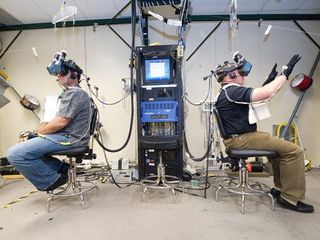
Space
Scientists at NASA have a tough mission: to search for life on other planets. That’s why they look to cutting-edge virtual-reality technology to control robots on Mars and to provide astronauts with a way to de-stress. At NASA’s Jet Propulsion Laboratory, researchers connected the Oculus Rift with motion-sensing equipment from the Kinect 2 sensor and Xbox One game console to control a robotic arm with the operator’s gestures. The setup could one day be used to control rovers or other instruments millions of miles away, according to NASA. By adding a Virtuix Omni treadmill to the setup, researchers were also able to simulate a walk on Mars to prepare astronauts for a potential human landing.
At CES this year, NASA used this technology with the public to share the experienceof what it’s like onboard various spacecraft. People got a chance to see through virtual reality what astronauts would view when climbing into the Orion capsule at the top of the agency's Space Launch System, which is slated for completion in 2018.
Museums
Virtual reality could add a lot of culture to our lives. The technology could instantly transport users to the Louvre in Paris, the Acropolis in Athens and the Guggenheim in New York City, all in one day. In fact, a number of museums have already collaborated with developers to create virtual spaces where people can experience the museums' physical collections. Last year, the British Museum in London launched its firstvirtual-reality weekend and the American Museum of Natural History in New York City made some of its collections virtuallyaccessible through Google Cardboard. Anyone with a smartphone and a Cardboard VR headset can now take a tour of the museum. [Photos: Tour the International Cryptozoology Museum]
Automotive manufacturing
From the design process to virtual prototypes, car manufacturers have been using high-tech simulations for decades. With the Oculus Rift, Ford Motor Company has made virtual reality central to its automotive development. In its Immersion Lab in Dearborn, Michigan, employees can don a virtual-reality headset and inspect the interior and exterior of a car, as well as have a seat inside an automobile before it is manufactured. The virtual prototype allows designers and engineers from various departments to closely inspect different elements, such as the engine or upholstery, and spot potential problems before they arise.
Education
The automotive industry isn't just using virtual reality for design purposes; Toyota is also usingOculus headsets as part of its TeenDrive365 campaign, to educate teenagers and parents about distracted driving. The immersive experiences provided by virtual-reality headsets can revolutionize education in all fields, the company said. By making field trips and simulations of complicated concepts accessible to people of all ages, virtual reality can make cognitive learning faster, more effective and efficient, Toyota officials said. Unimersiv and Cerevrum are examples of two such apps that offer an immense resource of educational VR content online.
Courtrooms
Jury members may no longer have to evaluate crime scenes by looking at dull, two-dimensional photographs. Seeing a crime scene in 3D could help jurors visualize how people and objects, such as bullets, move through space. Researchers at the University of Zurich published a paper in the journal Forensic Science, Medicine, and Pathology in 2014 examining the potential use of the Oculus Rift to reconstruct events and crime scenes discussed at trials. They found that the use of interactive technology made it easier for people to visualize and understand the details of a case and make a decision regarding whether a suspect was guilty or not.
Meditation & Mental Health
Withthe Guided Meditation VR program, users can find their happy place by putting on their Oculus headset and becoming immersed in one of four relaxing environments. The meditation experience can reduce stress and anxiety from daily life, according to research published in the American Journal of Psychiatry. [9 DIY Ways to Improve Your Mental Health]
Virtual reality can also act as a therapeutic tool for those who experience more debilitating stress, including PTSD, and panic disorders or phobias, researchers say. Virtual-reality tech could provide a safe environment for patients to come in contact with the things they fear, while remaining in a safe, controlled environment. A study published in the American Journal of Psychiatry in 2014 found that this type of VR exposure therapy alone was as good as a combination of drug and VR therapy for war veterans suffering from PTSD.
Shopping
Many people are already familiar with online shopping websites, but virtual-reality apps like Trilleniumcould be the next step in how consumers purchase products on the Web. These apps can provide a virtual tour of an entire store, improving on the traditional online shopping experience. Instead of looking through catalogs on a website, shoppers can get a real-time shopping experience and even shop with their friends. The app has already attracted the attention of one of Europe’s biggest online retailers, ASOS. Through the partnership with Trillenium, shoppers will soon be able to purchase items from ASOS through the use of their headset as easily as buying something on Amazon.
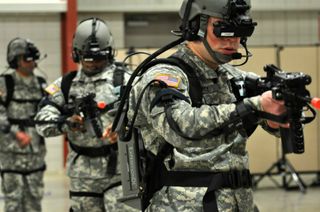
Military
The U.S. military often uses virtual-reality simulators to train soldiers before they are deployed. Noncommercial versions of games like Virtual Battlespace 2 and Unity 3D are used to prepare troops for combat. The gamelike simulations allow teams to practice working together in realistically replicated environments before they have to use real-world tactical equipment. And this immersive environment is extremely important, because training that captures the attention of the learner is often retained longer and is better understood.
Follow Knvul Sheikh on Twitter @KnvulS. Follow Live Science @livescience, Facebook & Google+. Original article on Live Science.
